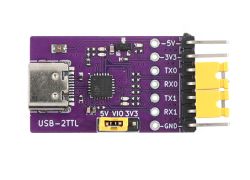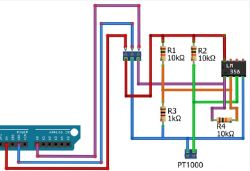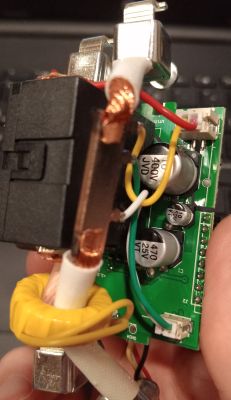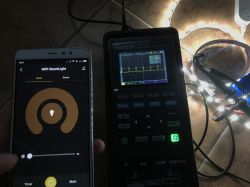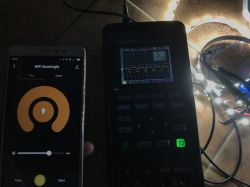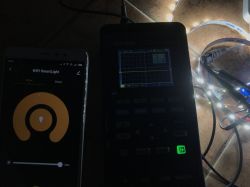Hello,

I bought four LVL 60cm 45w CCT ceiling lamps, two some time ago and two more recently, from AliExpress. Chipsets are TYWE3L and WB3L. I inspected and tested the drivers before flashing the chipsets. The chipsets are connected to the board of the driver by two rasters of 4 pins, however only 4 pins are used: Ground, Vcc, P6/PWM0 and P7/PWM1.
With the lamp connected to the Tuya cloud, I measured the voltages on PWM0 and PWM1 to see how they varied as a function of the inputs given into the Tuya app. P7 changes from about 0 to 3.2V when brightness changes from 1 to 1000 in the app and it is perfectly linear: V_PWM1=3.2/1000*Brightness. Same behavior for color temperature on P6, it is perfectly linear.
I flashed the two WB3L chipsets and made several attempts but couldn't replicate Tuya control. I ended with setting P7 as PWM on channel 1 and P6 as PWM_n on channel 2, now at least I get 3.2 volts on both when the two settings are at the top, however when I move one of the two slide controls both P6 and P7 are affected. But I must say that I made the settings knowing nothing about all the options that are available for configuration in the web app. For instance, what are flags for? start-up commands? How can I set up PWM0 and PWM1 reacting correctly to the two controls?
As far as TYWE3L, Tuya Cloudcutter is not available for sw version 3.3.35. Can I flash on it the same sw that I used for WB3L? I made some trials, rising the EN to 3.2 volts, but it didn't work. However, I didn't make any serious attempt yet - may I ask for your advice?
Another difference from Tuya: when I switch the light on, if brightness is set very high, more than 800/1000, the driver falters, the light loses Wi-Fi connection; it turns on again after some seconds with the light setting switched off. But I can switch on the lamp at 70% and then move it to 100% and it works. My guess is that the driver needs a smoother ramp-up of V_PWM1. It cannot accept a sudden jump from 0 to more than 2.5 or so. May I ask for your advice about it?
Hereunder I am attaching a picture of the lamp, some configuration files that I downloaded from Tuya Dev Center, and the config files that I got while flashing.
I could write a short and more detailed report with pictures, some info about the device, and flashing instructions if you believe that this could be of some help for the community (I see that there are already reports about other devices similar to this one, however, their settings didn't work for me)



